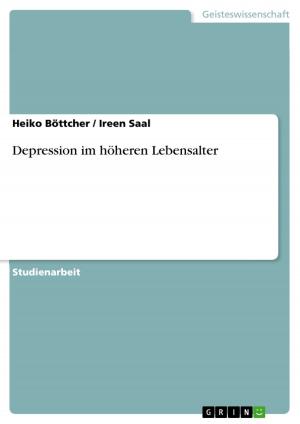American Beauty: Use of the red colour as a symbol of Lester's forgotten dreams
Nonfiction, Entertainment, Performing Arts, Film| Author: | Stefanie Brunn | ISBN: | 9783640207374 |
| Publisher: | GRIN Verlag | Publication: | November 6, 2008 |
| Imprint: | GRIN Verlag | Language: | English |
| Author: | Stefanie Brunn |
| ISBN: | 9783640207374 |
| Publisher: | GRIN Verlag |
| Publication: | November 6, 2008 |
| Imprint: | GRIN Verlag |
| Language: | English |
Essay from the year 2008 in the subject Film Science, grade: 1,3, Humboldt-University of Berlin (Anglistik / Amerikanistik), course: Postmodern Cinema, 6 entries in the bibliography, language: English, abstract: By mid-November 1999 the $15 million production American Beauty (1999) by Sam Mendes had already earned $65.6 million. It won five Academy Awards and three Golden Globes and provoked a lot of discussion after its release. It presents the story of Lester Burnham who at the age of 42 realises that he has lost his joy in life. His marriage to Carolyn Burnham just lasts to keep up appearances, he cannot fulfil himself in his job and his relationship to his daughter is rather distanced and problematic, consequently he encounters himself right in a stage of midlife crisis. Among others, it won the Award for Best Camera which is not surprising when we consider all the interesting shots and camera angles and the whole mise-en-scène. But the most eye-catching part of the composition is the contrast of colours. Whereas in nearly the whole movie we find restrained, pastel colours like white, grey, and blue as the dominant ones, for example in the interior of Lester's house, the colour red in specific scenes is the most outstanding one. It is used for very special objects, as for the entrance of Lester's house and the red roses that accompany every of Lester's fantasies about Angela, a school friend of his daughter Jane. In the following, I will show how the colour red can be understood as a symbol for Lester's lost and newly emerging dreams. Firstly, I will briefly demonstrate how the red entrance of his house begins to make Lester aware of his restrictedness and loss of freedom as well as the increasing disintegration of his family. Then secondly, I will switch to the most powerful image of the movie, the red rose. It has a different meaning for Lester, depending on if it is seen with Carolyn or with Angela. Whereas with Carolyn, the roses remind Lester even more of the decay of his family and their thwarted love, the rose petals that he imagines escorting Angela are symbols of his newly emerged sexual desire. He feels engaged to change his monotonous life and the red colour accompanies his transition and reminds him of his dreams.
Essay from the year 2008 in the subject Film Science, grade: 1,3, Humboldt-University of Berlin (Anglistik / Amerikanistik), course: Postmodern Cinema, 6 entries in the bibliography, language: English, abstract: By mid-November 1999 the $15 million production American Beauty (1999) by Sam Mendes had already earned $65.6 million. It won five Academy Awards and three Golden Globes and provoked a lot of discussion after its release. It presents the story of Lester Burnham who at the age of 42 realises that he has lost his joy in life. His marriage to Carolyn Burnham just lasts to keep up appearances, he cannot fulfil himself in his job and his relationship to his daughter is rather distanced and problematic, consequently he encounters himself right in a stage of midlife crisis. Among others, it won the Award for Best Camera which is not surprising when we consider all the interesting shots and camera angles and the whole mise-en-scène. But the most eye-catching part of the composition is the contrast of colours. Whereas in nearly the whole movie we find restrained, pastel colours like white, grey, and blue as the dominant ones, for example in the interior of Lester's house, the colour red in specific scenes is the most outstanding one. It is used for very special objects, as for the entrance of Lester's house and the red roses that accompany every of Lester's fantasies about Angela, a school friend of his daughter Jane. In the following, I will show how the colour red can be understood as a symbol for Lester's lost and newly emerging dreams. Firstly, I will briefly demonstrate how the red entrance of his house begins to make Lester aware of his restrictedness and loss of freedom as well as the increasing disintegration of his family. Then secondly, I will switch to the most powerful image of the movie, the red rose. It has a different meaning for Lester, depending on if it is seen with Carolyn or with Angela. Whereas with Carolyn, the roses remind Lester even more of the decay of his family and their thwarted love, the rose petals that he imagines escorting Angela are symbols of his newly emerged sexual desire. He feels engaged to change his monotonous life and the red colour accompanies his transition and reminds him of his dreams.















